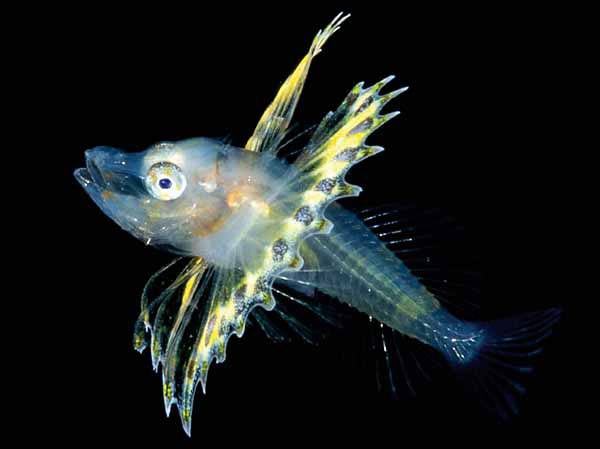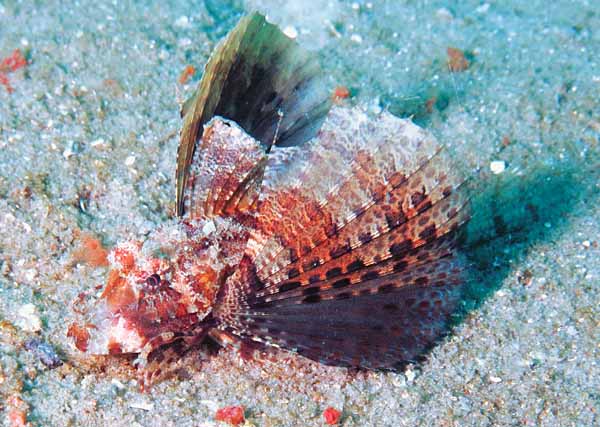Prionotus ophryas
Jordan & Swain, 1885
|
Familie: Triglidae SynonymePrionotus murielae Mobray in Borodin, 1928 Lokale Bezeichnung |
Typen
Holotypus: USNM 36944 .
Siehe: Eschmeyer, W.N., Fricke, R. & Van der Laan, R. (eds.) 2024. Catalog of Fishes electronic version
Typusfundort: Pensacola, Florida, U.S.A.
Etymologie
.
Verbreitung
Westatlantik: North Carolina, USA bis Venezuela, einschließlich den Bahamas, Golf von Mexiko und Antillen. Wahrscheinlich in der Nähe von Trinidad.
IUCN Status
|
Status: Stand 30.7.2020: NE Not Evaluated (nicht beurteilt) |
EX Extinct (ausgestorben) EW Extinct in the Wild (in der Natur ausgestorben) CR Critically Endangered (vom Aussterben bedroht) EN Endangered (stark gefährdet) VU Vulnerable (gefährdet) NT Near Threatened (potenziell gefährdet) LC Least Concern (nicht gefährdet) RE Regionally Extinct (regional oder national ausgestorben) |
Literatur
- Jordan, D.S. & Swain, J. 1885. Description of three new species of fishes (Prionotus stearnsi, Prionotus ophryas, and Anthias vivanus) collected at Pensacola, Florida, by Mr. Silas Stearns. Proceedings of the United States National Museum, 7 (465): 541-545. (BHL) Zitatseite [: 542, !!]
- Borodin, N.A. 1928. Scientific results of the yacht "Ara" Expedition during the years 1926 to 1928, while in command of William K. Vanderbilt. Fishes. Bulletin Vanderbilt Oceanographic Museum, 1 (1): 1-37, 2 maps, Pls. 1-5. Zitatseite [:26, Pl. 5 (fig. 2), Autor: Mowbray, !!, als Prionotus murieli]
- Teague, G.W. 1951. The sea-robins of America, a revision of the triglid fishes of the genus Prionotus. Comunicaciones Zoologicas del Museo de Historia Natural de Montevideo, 3 (61): 1-59, Pls. 1-5. Zitatseite [:14, Pl. 1 (figs. 1-2), !!, als Prionotus grisescens]
- Miller, G.C. & Richards, W.J. 1991. Nomenclatural changes in the genus Prionotus (Pisces: Triglidae). Bulletin of Marine Science, 48 (3): 757-762. (doi) Zitatseite [:760, Prionotus grisescens als fragliches Synonym]
- Victor, B.C. & Ianniello, L. 2020. Prionotus murielae Mowbray, 1928 is the juvenile of the Bandtail Searobin Prionotus ophryas (Teleostei: Scorpaeniformes: Triglidae). Journal of the Ocean Science Foundation, 35: 76-85. (doi) Zitatseite [: 77ff, Figs, 1-8, Farbfotos, als Synonym von Prionotus ophryas Jordan & Swain, 1885]


